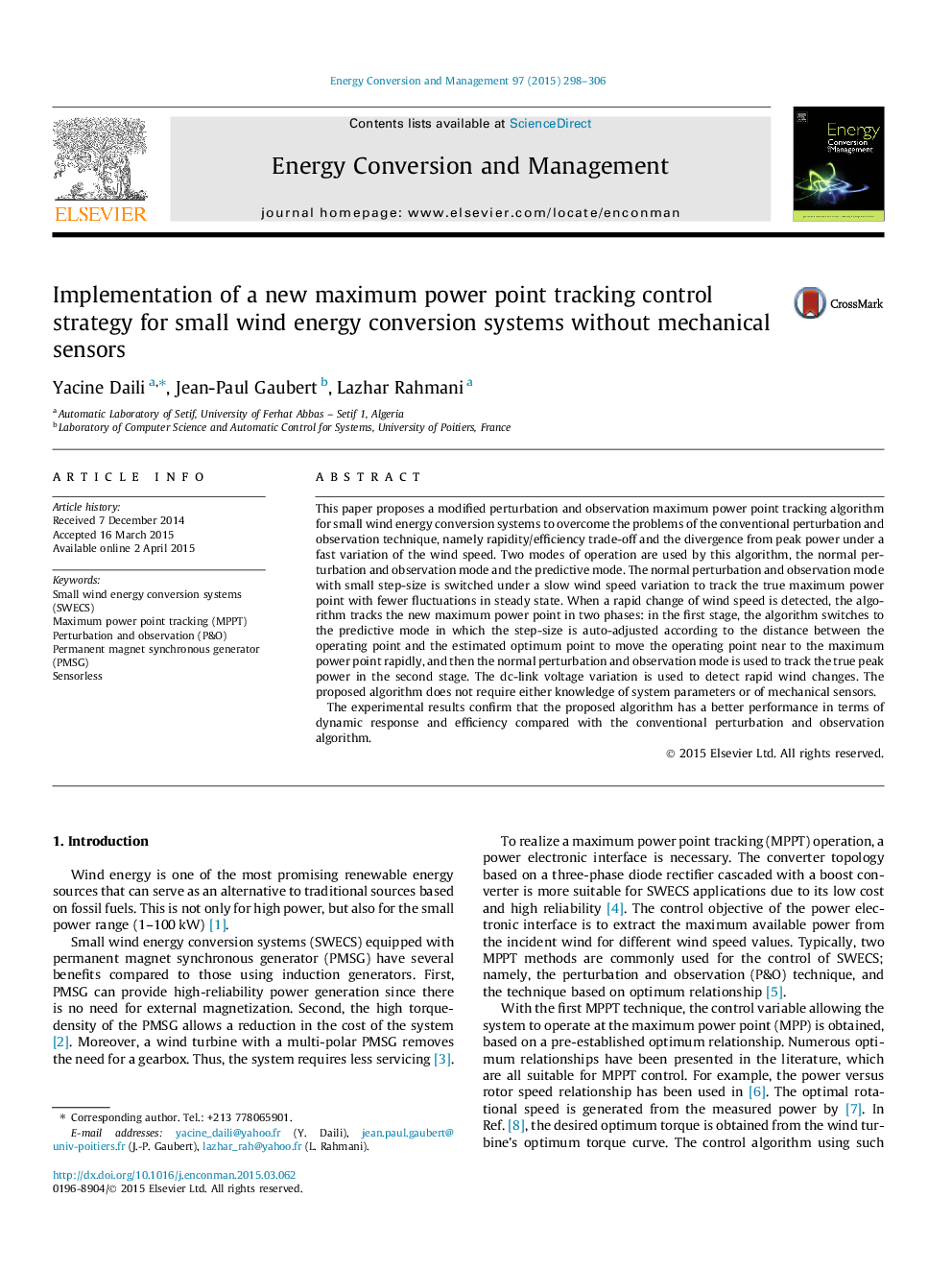| کد مقاله | کد نشریه | سال انتشار | مقاله انگلیسی | نسخه تمام متن |
|---|---|---|---|---|
| 760574 | 1462865 | 2015 | 9 صفحه PDF | دانلود رایگان |
• A new maximum power point tracking algorithm for small wind turbines is proposed.
• This algorithm resolves the problems of the classical perturb and observe method.
• The proposed method has been tested under several wind speed profiles.
• The validity of the new algorithm has been confirmed by the experimental results.
This paper proposes a modified perturbation and observation maximum power point tracking algorithm for small wind energy conversion systems to overcome the problems of the conventional perturbation and observation technique, namely rapidity/efficiency trade-off and the divergence from peak power under a fast variation of the wind speed. Two modes of operation are used by this algorithm, the normal perturbation and observation mode and the predictive mode. The normal perturbation and observation mode with small step-size is switched under a slow wind speed variation to track the true maximum power point with fewer fluctuations in steady state. When a rapid change of wind speed is detected, the algorithm tracks the new maximum power point in two phases: in the first stage, the algorithm switches to the predictive mode in which the step-size is auto-adjusted according to the distance between the operating point and the estimated optimum point to move the operating point near to the maximum power point rapidly, and then the normal perturbation and observation mode is used to track the true peak power in the second stage. The dc-link voltage variation is used to detect rapid wind changes. The proposed algorithm does not require either knowledge of system parameters or of mechanical sensors.The experimental results confirm that the proposed algorithm has a better performance in terms of dynamic response and efficiency compared with the conventional perturbation and observation algorithm.
Journal: Energy Conversion and Management - Volume 97, June 2015, Pages 298–306
